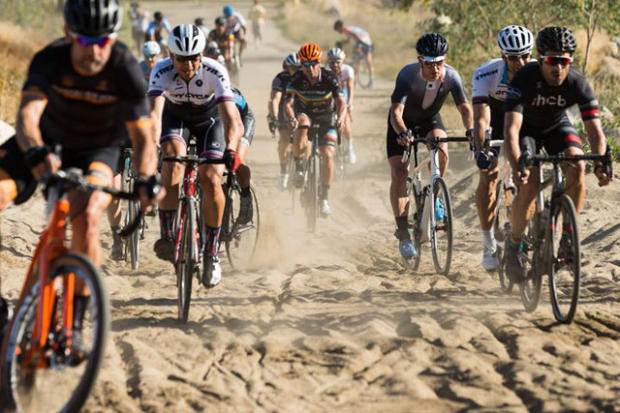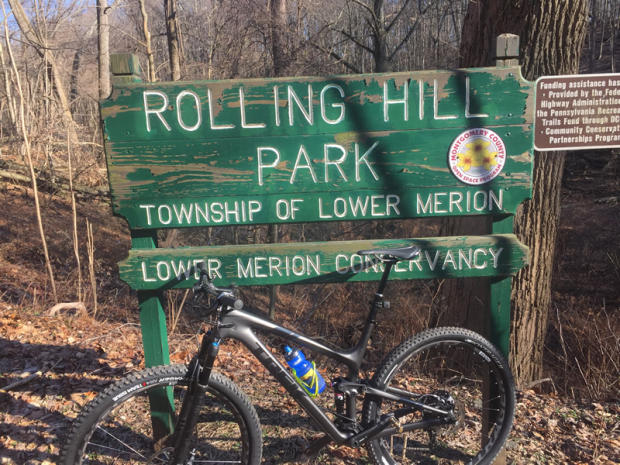Are Gravel and Tri Kissin’ Cousins?
What is a gravel bike and why are we talking about it on Slowtwitch? The second question is easy, I’ll tackle that, but let’s talk about what a gravel bike is.
Four or five years ago it was hard to explain the difference between a gravel grinder and a cyclocrosser. They each had tires ranging from 28mm to 32mm in width (a standard road tire averages 23mm to 25mm in width). Things have changed mightily over the last 5 years.
Today, most “gravel bikes” are built to accept either 700c (622mm bead diameter) or (the smaller diameter) 650b wheels (aka 27.5”, 584mm bead diameter), meaning, the same bike can take either wheel. How is this so? It’s because of disc brakes.
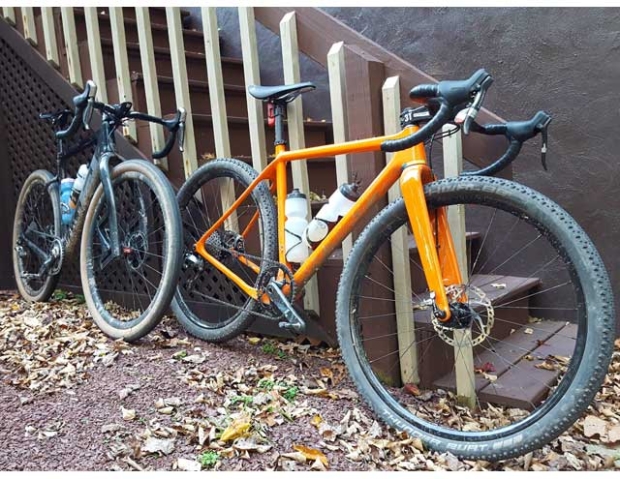
Sidestepping the discussion of whether the brake itself offers better stopping performance, this tech allows the rider a much greater range of tire sizes, and this is the reason you might want to (eventually) have two sets of wheels for your gravel bike: you use the 700c for 32mm or 35mm tires, the 650b for 40mm, 45mm or even north of 50mm tires. Gravel bikes are all about tire clearance.
These bikes here were offered up as evidence of user ardency in a Slowtwitch Reader Forum thread entitled Gravel Bike Porn. Most of these pics were snapped by the bike owners themselves. The image highest up is of an OPEN U.P., that is, the bike manufacturer is “OPEN” and the model is the “U.P.”, and "LAI" is the forum user who owns it.
That orange OPEN U.P. above has Schwalbe Thunder Burt tires on it. These are 53mm-wide tires. This is a full blown MTB tire, on a road motif. This is a gravel bike. Get it?
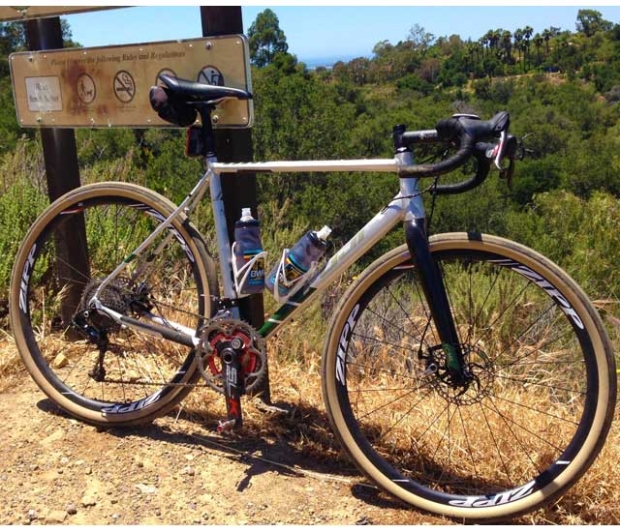
But it doesn’t have to be a 53mm tire. Here above is Tom Anhalt's (TomA) Fuji Snowqualmie (Fuji is currently selling its Jari). This is full gravel, but it has 44mm tires. This is the beauty of the gravel bike: It can be what you want it to be. It's a “choose your weapon” bike. Owning one of these feels like owning a pair of XC skis in the old days, just, instead of the wax being the tactical equipment decision it’s the tire.

Above is RCope’s Volagi Viaje Ti and this is another element to gravel: All bets are off as to frame material. The bikes pictured here are carbon, steel, aluminum and titanium.
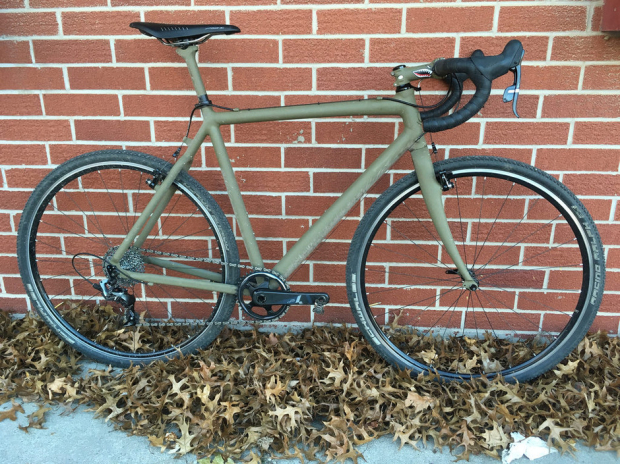
You don’t necessarily need to go out and buy one of these. You can retask an existing bike. All you need is tire clearance! Here’s an older Cannondale cross bike with cantilever brakes that kppolich remade into a 1x gravel bike and, if you look at this pic, those are Schwalbe Racing Ralphs, full blown MTB tread, just in a 33mm cross/gravel motif. (But if you want Cannondale's real dedicated gravel bike, maybe look at the Slate.)
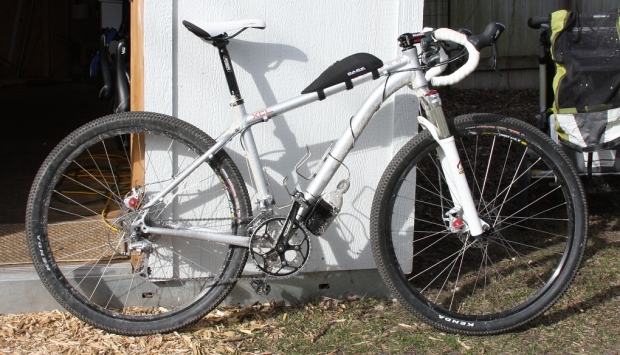
Or you can go the other direction: Start with full MTB and build down. Before I got a gravel bike made to my spec, my initial thought (5 years ago) was to retask a hardtail 29er of mine into a bike that I had no idea existed (the wide tire gravel bike). What I needed was a go-anywhere, do-anything bike and that platform made some sense to me. Obviously it also made sense to DarkSpeedWorks, who has retasked this Access XCL above into a gravel grinder, the advantage being a suspension fork (if you want one) and tons of tire clearance, such as for the 53mm tires on this bike.
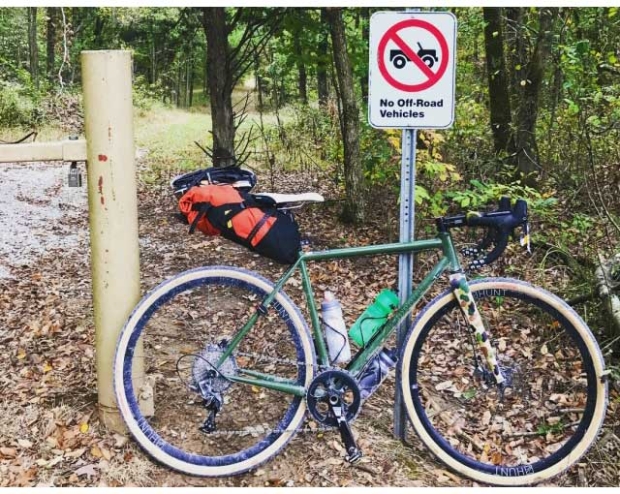
Above is sparshall’s Ride Endpoint Coffee Grinder. This Ride Endpoint is one among a number of steel frame bikes in this gallery and steel is a great material for gravel bikes, which are also great touring bikes as you can see by how this is set up. When I got my gravel bike built I saw it as part of a rig that, en toto, would include a trailer (and mine has a Topeak trailer that it tows). Mine, just like this one above, has 38mm tires.

Here’s another steel bike, also as you can see set up to carry stuff. This is an English Cycles and it’s got 45mm tires on it. It belongs to gardenvelo. (photo: Rob English)
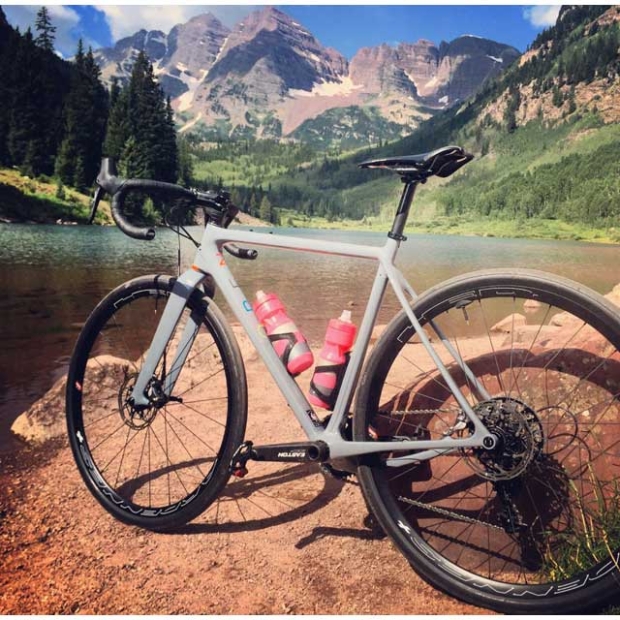
What about this picture postcard? This is chrisgrigsby’s OPEN U.P., with HED Ardenne wheels and 35mm tires. I chose HED Ardennes for my bike as well, but honestly the wheel's only imperative is that it accept the tire. If it does, it works. This bike above is another 1x, which is common but not universal among gravel bikes. It weighs in, with pedals, at 16.2 lb.
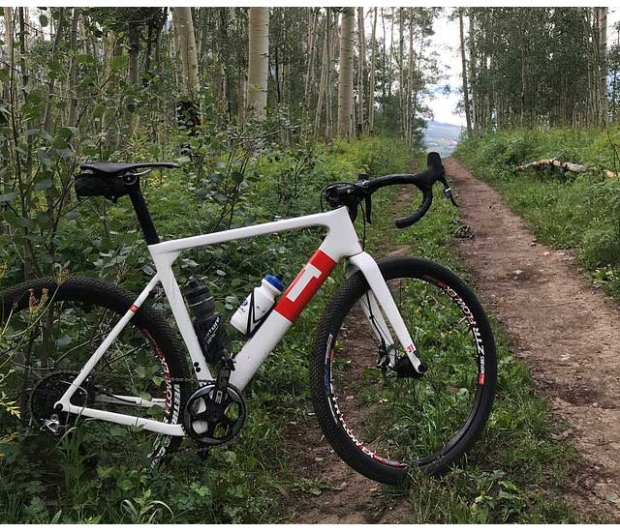
This 3T Exploro above is designed to be ridden with either 700c or 650b wheels. The idea is that the circumference of the entire rolling complex – wheel and tire – should be pretty much the same. A wider tire is not only wider but taller. Forum user orbilius is its owner.
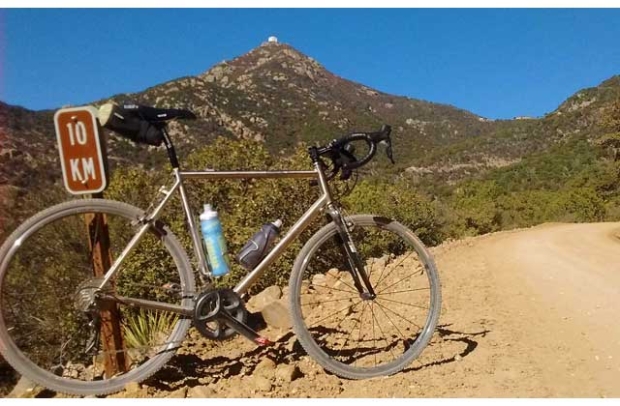
This Ritchey Breakaway Ti above has 30mm tires. Why the big disparity in tire width among all these bikes? The better rider you are, the less tire you need. Realize, though, eb’s bike (above) pinch flatted going down this dirt road. So there is that.

But this gets us to the heart of it, as you contemplate Krustinator’s Diamondback Hanjo Trail above, against the backdrop of what looks like it might be Boulder’s Flatirons. In the west, we don’t gravel race on gravel very much, and it’s not just because we don’t have any. It’s because out where I live we don’t manufacture a course designed and manicured for the bike. We design the bike for the course, and the course is whatever the most appropriate route is from Point A to Point B, with terrain a necessary detail to contend with.
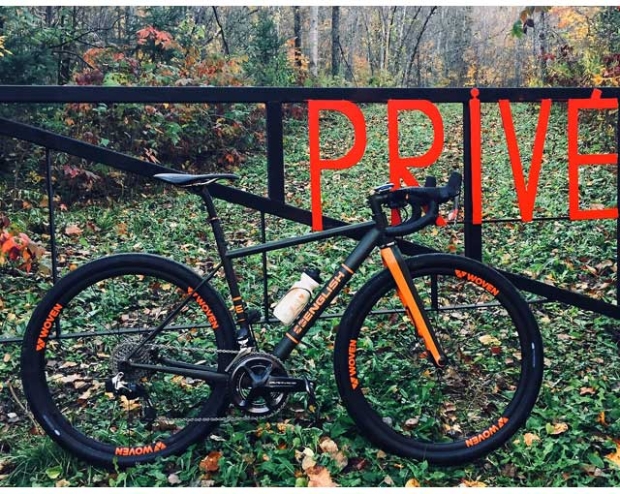
This is exactly the point of multisport, and always has been. Let contemplate Bonesbrigade’s English above as he apparently prepares to violate private property (something I, of course, have never done). Since the beginning – which for me was in the 1970s – I have always resisted the name “triathlon” and instead called my activity “multisport” because triathlon seemed too limiting. Since the 80s, I’ve always simply said that my goal as a manufacturer and an enthusiast is to make, and use, products that got me from Point A to Point B under human powered locomotion.
Incidentally, that bike above is outfitted with Compass Switchback Hill 48mm tires, and shifts with SRAM ETap and stops with hydro brakes, and a custom wiring harness for the etap FD battery as that battery does not clear tires that big).
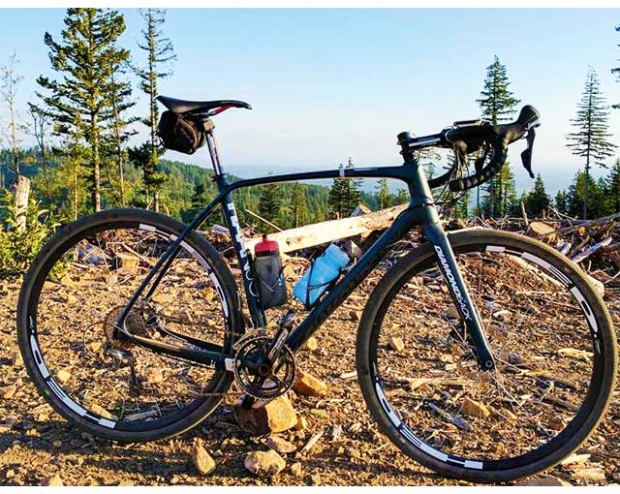
Here’s another Diamondback Hanjo Trail, above, owned by JesseN, with 32mm tires, but to continue my soliloquy, can you see why so-called gravel bikes, as expressed here, with these owners’ bikes, fit square inside my idea of my sport? Triathlon or whatever you want to call what we do is about finding a solution to the problem of getting from here to there. In swim-run the solution doesn’t require a bike at all, because to get “there” you need to run. Or, if you want to take the most direct route, you need to swim across rather than running around the obstacle (open water), hence swim-run.
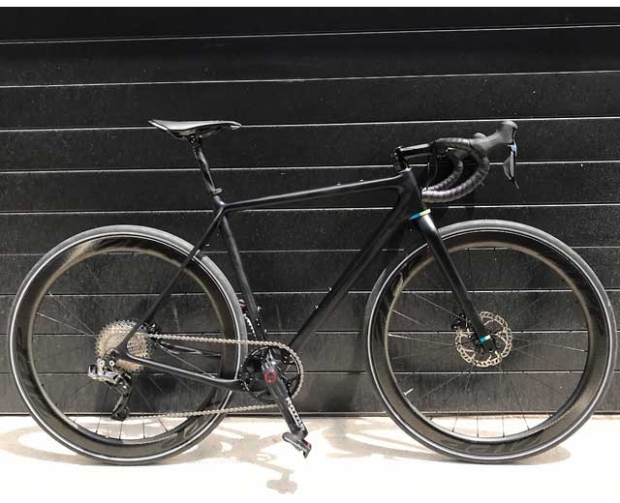
As you look at AlexZA’s OPEN U.P. above, imagine then the point of “gravel” as I see it: The most ingenious method of using tech to traverse the geography God placed in front of you. Little known fact: I was XTERRA’s first bike licensee. Back then the company and the race was called Aquaterra, and my company (Quintana Roo) made a bike called the Quinterra: a mid 90s vintage front suspended hardtail bike with 38mm slicks and aerobars. It was weird. But it worked! I didn’t sell these bikes. That wasn’t the point. It was a thought experiment. A proof of concept. Of course, the bikes today are way past and way better than what I made, but, you see why gravel is not, for me, a thing apart from multisport: it is multisport.
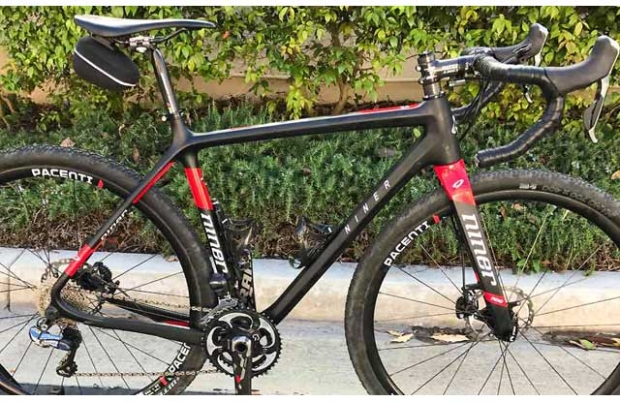
Those Quinterras, we took them out on their maiden voyages: a multivariant-surface 3-day tour from Palm Springs to San Diego, with as much offroad, private property owned by large corporations (which got me busted, but it was worth it). Above is AllenPG’s Niner, with 40mm tires.



